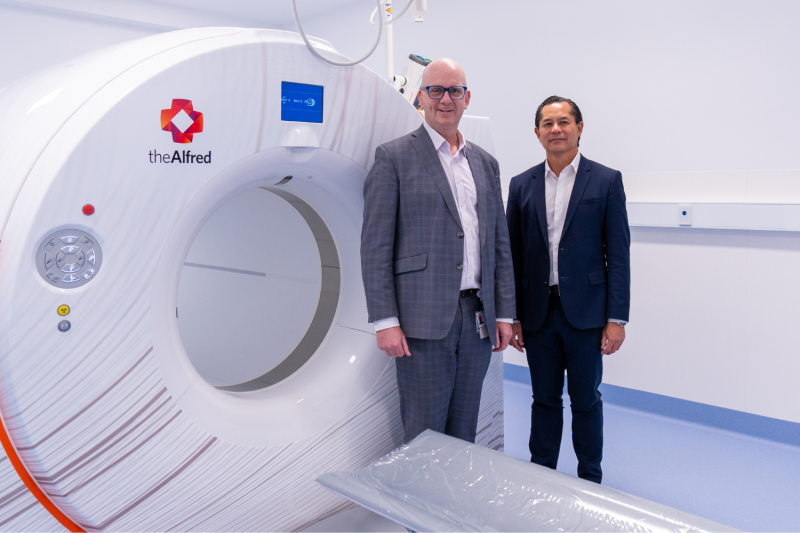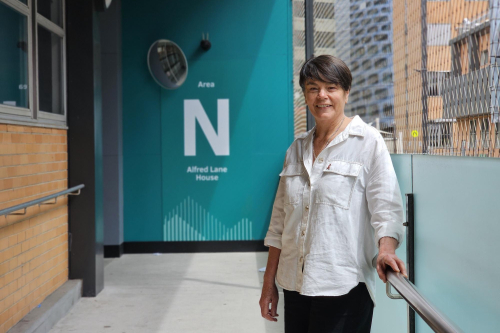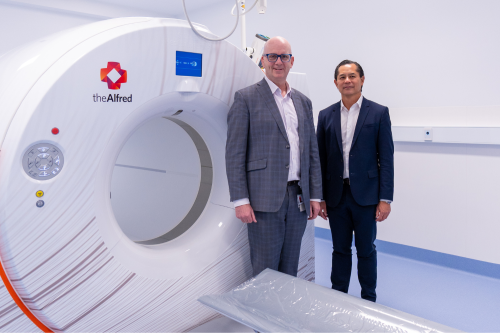Victorian patients gain access to world-leading cancer detection technology

Victorian cancer patients will soon have access to one of the most advanced imaging technologies available globally, with The Alfred becoming the first public hospital in the state to install a total-body Quadra PET scanner – the fastest and most precise of its kind.
This milestone marks a major step forward in cancer care, diagnosis and research, with the new scanner enabling earlier detection of very small cancers, faster and safer scans, and real-time assessment of treatment progress.
The scanner, which is housed in the Paula Fox Melanoma and Cancer Centre’s soon-to-be-opened Theranostics Service, will transform outcomes for patients across Victoria, said Prof Mark Shackleton, Director Oncology at The Alfred.
“This technology allows us to detect cancers at a very early stage, even before symptoms appear, and for patients that can mean earlier diagnosis, safer and more tailored treatments, and better survival rates,” Prof Shackleton said.
“It’s a significant boost for patients, particularly for cancer patients requiring multiple scans because we’ll be able to scan the entire body simultaneously and with far less radiation than a traditional PET – making such scanning easier and safer for patients and staff.”
Crucially, the Quadra’s capabilities extend beyond cancer, said Prof Meng Law, Director Radiology and Nuclear Medicine at The Alfred.
“This is a game-changer, not just for cancer but also for neurological research and care, especially for patients with conditions such as dementia, epilepsy, or traumatic brain injury,” Prof Law said.
“The technology cuts scan times from up to one hour down to five minutes, meaning we can scan more people in need, more quickly, and with far less discomfort – especially patients with advanced cancer or neurological conditions who can find long scan times physically and psychologically challenging.”
“The Quadra also opens new frontiers in AI-driven diagnostics and precision medicine, placing Victoria at the forefront of global innovation.”
The technology will elevate the capabilities of clinicians and researchers, with its ultra-high resolution and real-time technology allowing teams to match therapies to individual tumour biology – a field known as theranostics – and to continue their work in delivering cutting-edge clinical trials.
“We’ll be able to see how a patient is responding to a particular treatment in near-real time, potentially adjusting their treatment as needed based on side effects the patient may not even know they’re experiencing yet,” Prof Shackleton said.
“Access to such real time information also opens doors to a world of research and treatment opportunities, previously unimaginable.
“It reinforces Victoria’s position as a leader in the rapidly emerging field of theranostics – where diagnosis and treatment are combined for more precise and personalised care.”
Victorian Health Minister Mary-Anne Thomas visited the growing centre to tour the Theranostics Service and view the new scanner in action.
The Quadra PET scanner was made possible through a $24 million investment, jointly funded by the Federal Government ($12 million), Victorian Government ($7 million), and philanthropic support through The Alfred Foundation ($5 million).



